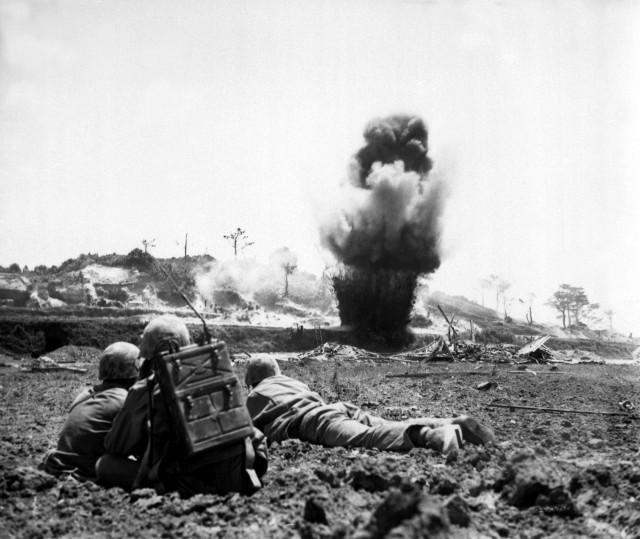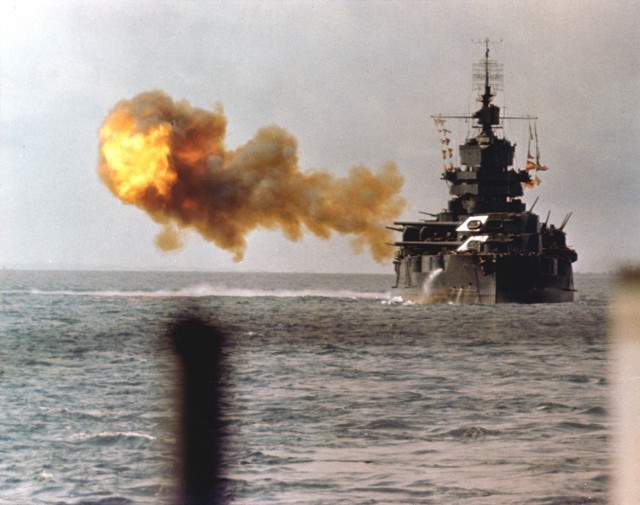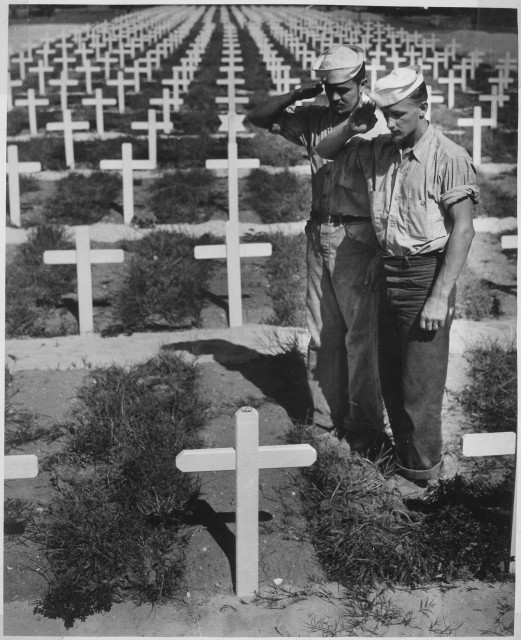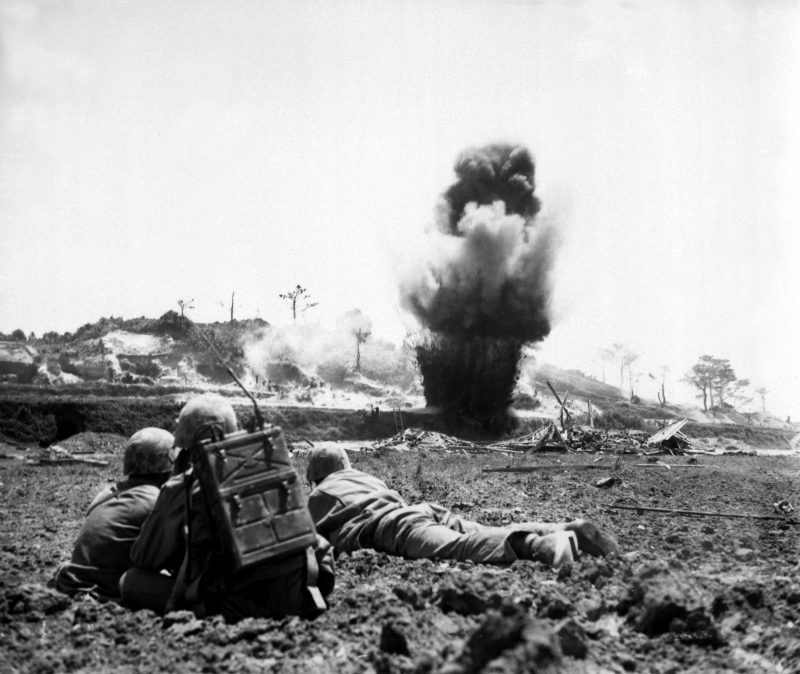
The Battle of Okinawa took place from April to June 1945 between the United States and Japan. There were over 100,000 Japanese casualties while the American Forces had roughly half the number. The American forces saw Okinawa as a strategic point from where they could launch attacks on Japan. It was thus a must win battle for the Americans. On the other hand, the Japanese Commander General Ushijima had been given direct orders to put up massive resistance and not to surrender at whichever cost.
The Americans did not have exact intelligence about the area, but they estimated at least 65,000 Japanese troops which was a major miscalculation because the Japanese had on the ground over 135,000 troops. Additionally, General Mitsuru Ushijima had also incorporated over 40,000 civilians to serve as reserve militia. The primary defense would be at southern part of Okinawa, where General Mitsuru Ushijima would camp with the majority of the Japanese troops. The northern part of the island would be commanded by Colonel Takehido Udo.
In the southern part of the island, most of the men would be positioned in fortifications, from where they would mount attacks on the Americans. Apart from the land attacks the Japanese also had Kamikazes which would sink American warships and bombers. The Kamikazes were supposed to make continuous hits on the Americans, making it harder for them to advance and by the end of it the casualty number would escalate to a point that the Americans would have to retreat. However, this was not to happen even though the Kamikazes did inflict serious damage on American warships.
The Americans arrived near the island on late March 1945 and anchored on Hagushi Bay on the Western part of the island. The American commander was Lieutenant-General Simon Bolivar Buckner and with him were 180,000 troops. While anchoring, the American ships encountered serious attacks from the Japanese, which was meant to unsettle them and it hard for them to stick to their initial plan. This was a tactic that the Japanese employed whenever Allied forces landed on their shores and it always worked well for them, but only for a short while.

The main attack on Okinawa was scheduled for 1st April 1945, and the Americans used the days leading to the attack to move closer to the shore and secure attack positions. Some American warships succumbed to the Kamikaze attacks, unlike the British ships which proved resistant to the attacks due to their armored flight decks. The Kamikazes were able to sink 36 American ships, and cause serious damage on 368 ships. In the process, 4,907 sailors perished and 4,874 were wounded. On the other hand, the Allied Forces were able to destroy 169 Kamikazes, out of the 193 that had caused massive destruction on their ships.
On April 1st, the Allied Forces had 300 warships anchored in Okinawa and 1,139 additional vessels and destroyers. By the end of that day, over 60,000 troops had landed on Hagushi Bay. The Allied forces easily swept through the southeast and south-central part of the island and were able to capture the Kadena and Yomitan airfields. Twenty days later, Japanese resistance in the North under Colonel Takehido Udo had been eradicated and shifted to guerilla style attacks. However, it is at the Southern part of the island where the American Forces would encounter the greatest resistance. The American forces incurred heavy losses on the South, such that by late May Admiral Raymond Spruance who was commander of the US Fifth fleet had to be relieved by Admiral William Halsey.
Fierce fighting would continue throughout the whole of June, but the Japanese defensive capacity was reduced as they continued to lose more and more men. By June 21st, the Japanese defense had been destroyed and General Mitsuru Ushijima committed suicide the following day. On July 2nd, the Americans claimed victory on Okinawa and the Battle was over. The island of Okinawa would play an integral part in their future attacks on Japan mostly because of its airstrips.

The Battle of Okinawa was gruesome and by the end, 7,373 American soldiers perished, and left 35,000 more wounded. The Japanese lost an even bigger number, with over 110,000 men dead. The Japanese also lost over 4,000 aircraft.
